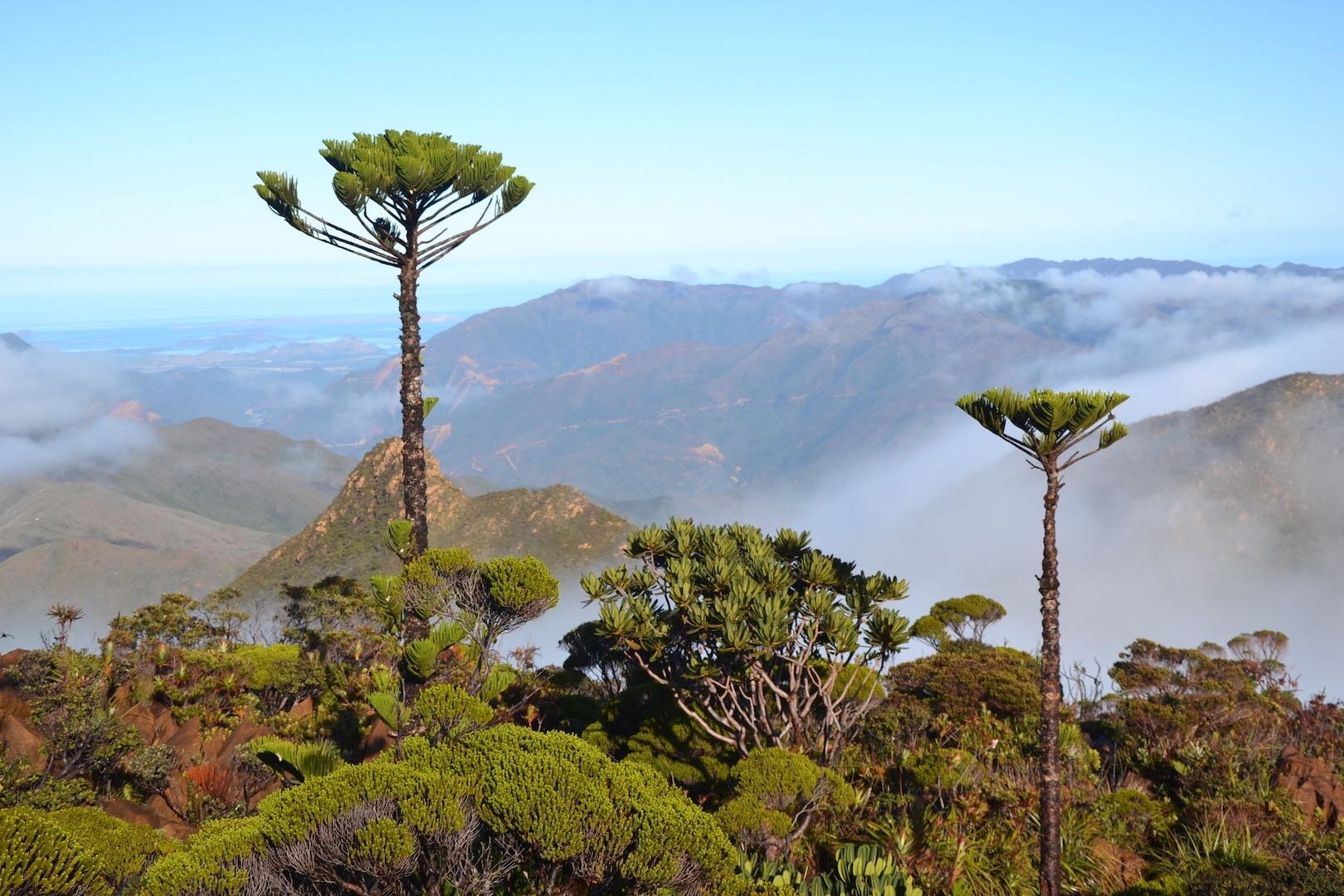Araucariaceae: the ancient giants that are the world’s rarest trees
Despite the ancient family’s geographical spread, almost half of its living species – 19 out of 45 – are only found on one small Pacific archipelago about 1,000 kilometers from Australia: New Caledonia.
These mountainous tropical islands are home to 5 Agathis species and 14 Araucaria. “These plants are amazing, they don’t look like anything else,” says Robert Nasi, general director of the Center for International Forestry Research, who mapped the distribution of the different Araucariaceae species across the islands.
Mt. Humboldt araucaria. Photo credit: V. Tanguy
Some grow only at the very top of New Caledonia’s spine of wet misty mountains, some among broadleaf forest, others on rocky upraised reefs near the shore.
New Caledonia has been isolated from all other landmasses for at least 45 million years, its geology is complex, and it contains a wide range of ecosystems in a land area of just 18,275 square kilometers — half the size of Switzerland. This has led to a rampant biodiversity, not just among Araucariaceae, but also among plants in general: the archipelago has 3,261 indigenous species – almost as many as the whole of continental Europe – making it the world’s smallest biodiversity hotspot.
But with each adapted to a specific environment, New Caledonia’s Araucariaceae are vulnerable. One species, Araucaria scopulorum, is known only from a handful of locations designated for nickel mining, one of the country’s most important industries.
Climate change poses risks for many of the species too. “I don’t think they will disappear within our lifetime, but I don’t think they will last very long,” says Nasi. “A species that is restricted to a 200-meter elevation band on top of a mountain on one island in the Pacific probably doesn’t have a bright future under climate change.”
More effort should be put into propagating New Caledonia’s botanical treasures and growing them in living collections, including outside of the country, Nasi says – and the last stands of the most endangered species should be fully protected from mining and other disturbances.
Article written by Kate Evans in Global Landscape Forum.
